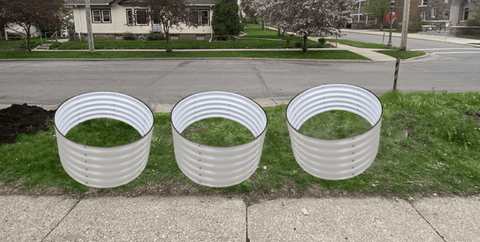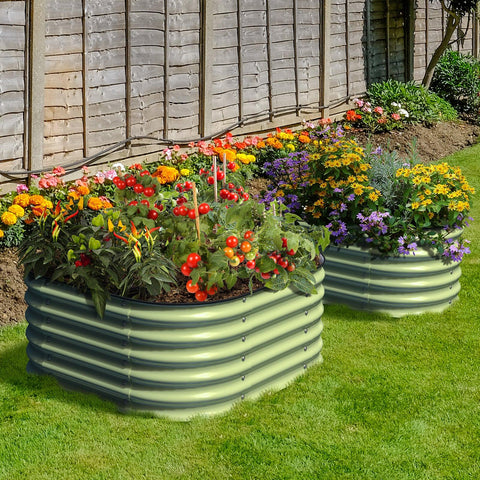Knowledge from Olle Garden Bed: Cold Resistant Ferns In The Green Garden All Year Round
Do you know that the cold resistance of ferns in some places extends throughout the year? The cold resistance of ferns varies from climate region to climate region, but in many regions, you can plant varieties that provide year-round evergreen leaves. The following content also has some reference value for raised garden beds.
About the hardy ferns
Ferns are the favorite shade plants of many gardeners. Unlike most garden plants, ferns do not flower. They are truly ancient plants that have existed for hundreds of millions of years and are propagated through spores rather than seeds.
In the garden, ferns work well in the shade, and you may find it difficult to grow other plants. They provide interesting feathery leaves, which can give you a tropical feeling no matter what your local climate is.
Like all ferns, these harder types prefer partial shadows and wetness. Fertile, organic and slightly acidic soils are most suitable for most ferns, but there are some differences in soil type preferences.
Because hardy ferns grow longer in your garden, it is important to ensure that you provide the right conditions for the particular ferns you choose. Before planting, make sure you understand the needs of ferns.

Hardy ferns
When it comes to ferns, cold tolerance means different things, depending on where you live. If you are gardening in Zone 7 and warm areas, these species and fern varieties should provide you with evergreen leaves:
Christmas fern – This fern is native to the southern United States and has leathery dark leaves. It grows to about two to three feet (0.6 to 0.9 meters) tall, which is taller than it. It can tolerate drier soil than some ferns and prefers shade.
Dryopteris australis - These ferns are native to the south. They are about 12 to 24 inches (30 to 60 centimeters) tall and have round yellow green leaves. They require constant moisture in the soil and complete to partial shading.
Ebony Spleen – This is a small native species that grows no more than 20 inches (50 centimeters) tall and has dark green leaves. This is a good choice for the drier areas of the garden because it does not like wet soil.
Drygrass fern - As the name suggests, this fern will smell fresh cut hay when crushed. It can tolerate some drought conditions and grows to 18 to 30 inches (46 to 76 centimeters) tall. It has delicate, bright green leaves.
Holly fern – Holly fern has glossy, dark green leaves, much like the plant of the same name. Like holly, they are evergreen in the south of the original range. These ferns cannot tolerate drought well, so they are watered in dry conditions.
Southern Wood Fern – For a true statement, choose this tall species that can grow up to four feet (1.2 meters). Southern wood fern is evergreen in the south of its origin, and it grows in the stream coast and marsh areas. Leave this for a damp, cool place in your garden.
Male fern – male fern is native to the south and has a classic, tall, vase like growth habit. It can grow up to five feet (1.5 meters) high and requires constant moisture.

Japanese painted ferns – not native to North America, this is still a striking beauty in winter gardens. It is very small, only 10 to 15 inches (25 to 38 cm) high. The reason why Japanese painted ferns are so amazing is that their colors include silver gray, green and rich Burgundy.
Japanese fringed fern – This evergreen species has an upright growth habit, which can reach three feet (0.9 meters). The leaves are dark, especially lace and delicate. It grows from light to full shade, and the soil moisture is stable.
Korean rock fern – like fringed fern, this species has feathery dark green leaves, but it is shorter and only grows to about 12 inches (30 centimeters). Remember, the cold tolerance of ferns is relative. Check each type against your climate zone to make sure it grows in your garden all year round.
